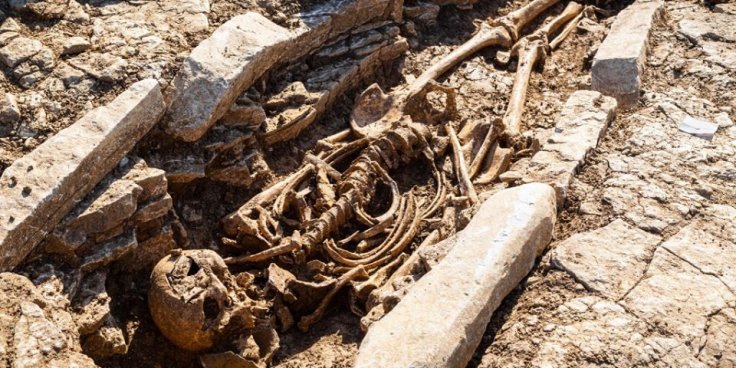More than 50 burials of children and adults in an unusual Roman cemetery was discovered during the building work for a new school in Somerset, a county in South West England. As per the researchers this finding at Somerton, near Glastonbury sheds light on the life cycle of these individuals in that region after the Roman invasion.
The archaeologists claimed that people buried in the Romano-British cemetery indicated that some of these people were high-status Romans. They also noticed that the position of a woman's skull suggested that it was initially resting on a pillow. After the finding of tiny nails at the foot of the graves, the researchers claim that these people were buried wearing hobnail boots.
The Roman-British graves
The structure of the graves fascinated the researchers as most of them were lined with local stone and capped as well as sealed with the same kind of the slabs which were used to create roofs in the area almost 2,000 years ago. In one of those graves, the researchers noticed that the slabs were used to create a tent-like structure above the deceased person.
It should be noted that recently, a similar burial setup was discovered at the Hinkley Point C nuclear power station construction site on the Somerset coast almost 40 km from the north-west of Somerton.
Archaeological finding
Here it should be mentioned that even though there is no direct description of Roman funerary practices, numerous ancient sources provide accounts of ancient funerals, which include five parts and these are procession, cremation and burial, eulogy, feast, and then commemoration.
From the recently found graveyard, archaeologists discovered several grave goods such as jewellery and pottery. While from one of the pots they found chicken wing, the discovered artefacts also included a coin from the time of Roman emperor Vespasian, who ruled from 69 to 79 CE, as well as a piece of carved bone, most likely from a knife handle.

Analyzing the discovery
An archaeologist and member of the South West Heritage Trust, Steve Membery said that the deceased individuals eventually had some status in the society. He mentioned that "Most graves in Roman Britain are pretty much a rectangular cut with someone laid on their back. They've actually built these graves. There's been a lot more care taken over these."
He also claimed that these people most likely used to work in a nearby Roman villa, which has yet to be discovered. But an outhouse and a barn associated with the villa have been already found in that area.
It should be noted that as per the archaeologists the fascinating fact about the graves was how local residents adopted the Roman burial customs after the invasion. As per Membery, among these newly found ancient individuals, the later ones were squashed into the oldest graves but laid flat, in the Roman style, while the grave goods were placed near the head.
Further research on ancient individuals
The researchers will conduct further DNA analysis to collect more evidence of these individuals. But some of the experts have claimed that these deceased people were actually British who later adopted Roman customs.
In terms of the finding at Hinkley Point, the collected evidence showed that the buried people actually belonged to the eastern part of Asia. As reported by The Guardian, Membery stated, "They probably made their way to the eastern Roman empire and then their descendants came to Britain."
However, the archaeological site in Somerset is currently secured for further scientific analysis to determine more important factors about the individuals.









